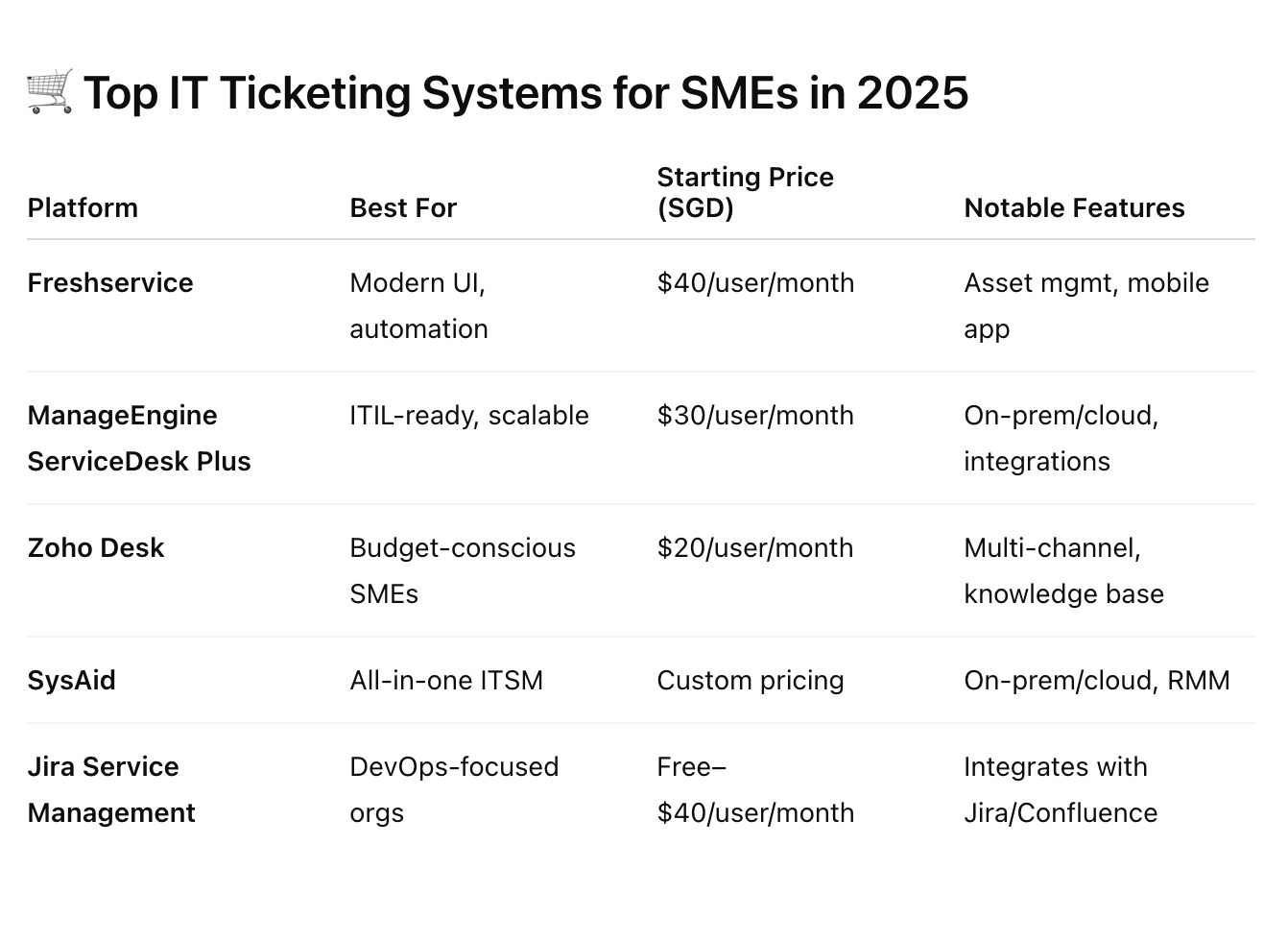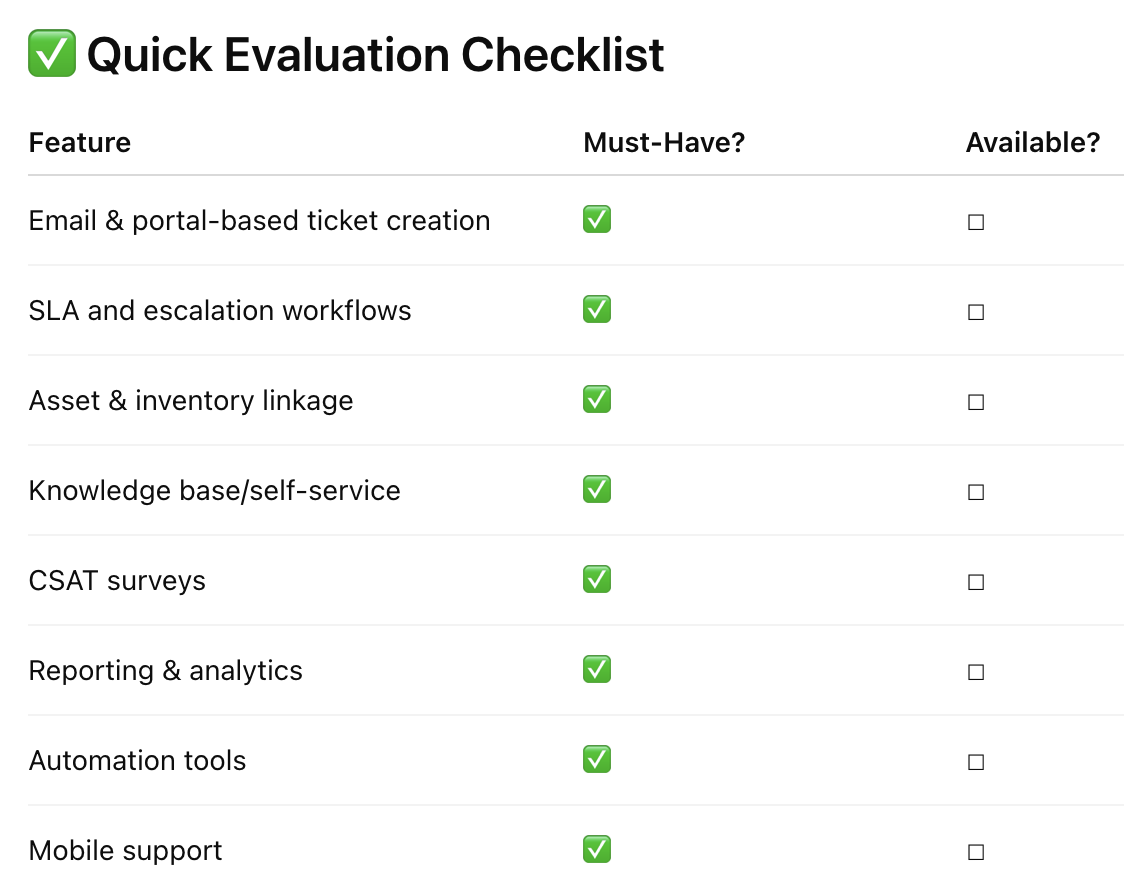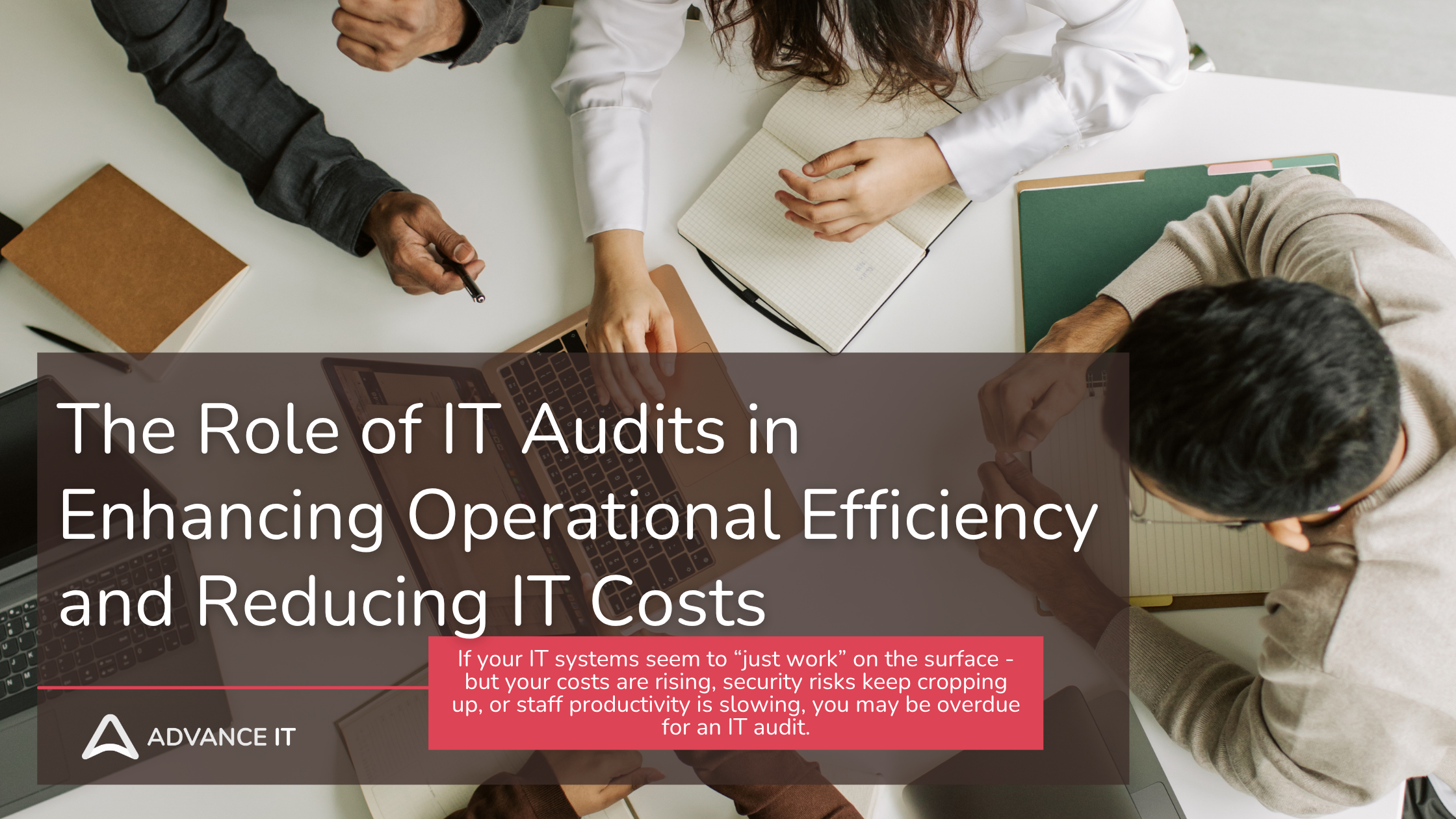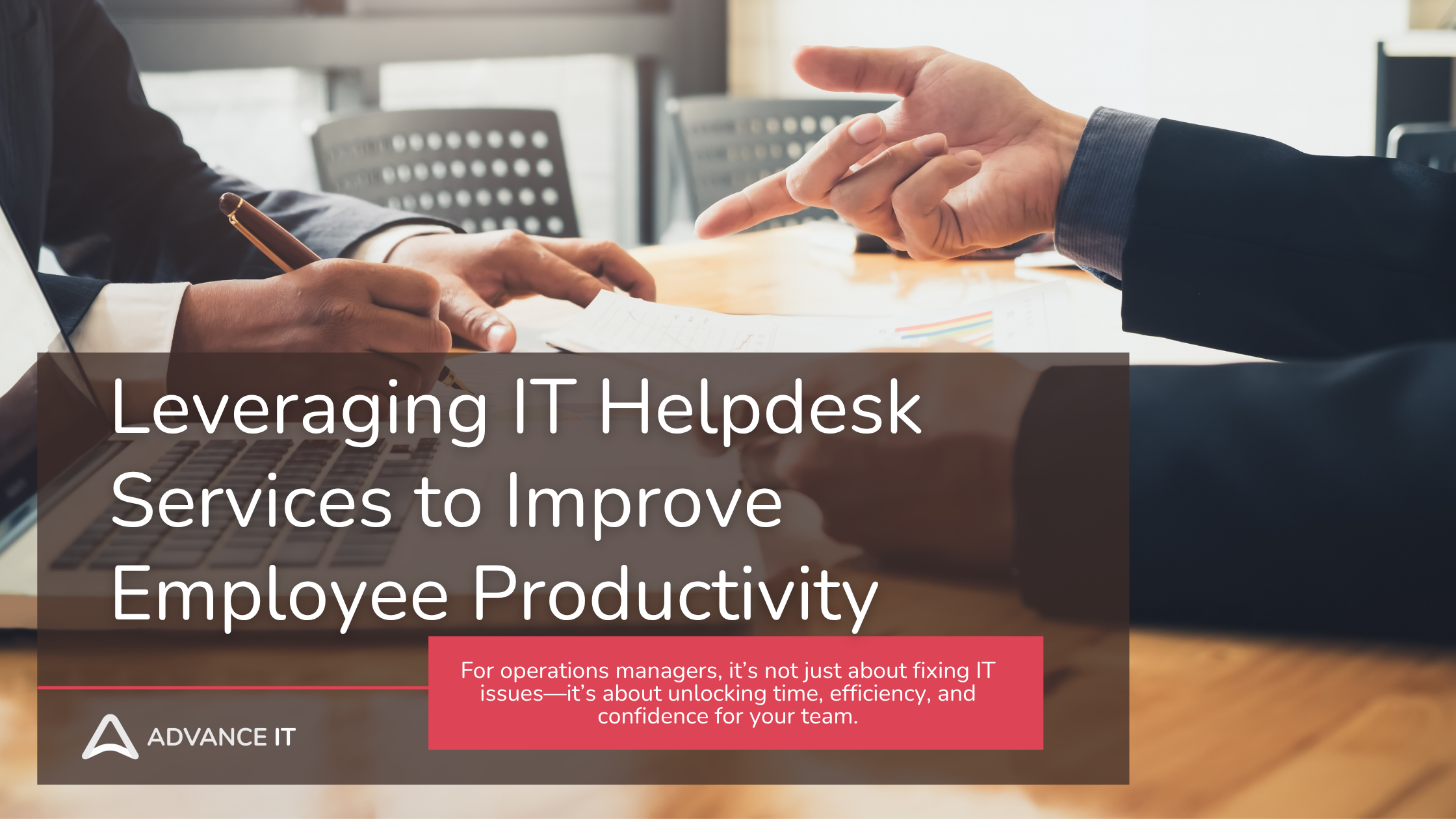What a Good IT Ticketing System Should Look Like (A 2025 Guide for SMBs)
In 2025, slow response times and lost service requests aren’t just annoying - they’re business risks.
Whether you're an SME with a lean IT team or a growing startup scaling your operations, an effective IT ticketing system is essential for delivering prompt, trackable, and high-quality tech support.
But with dozens of platforms promising the moon, how do you know which features really matter? This guide breaks down what a good IT ticketing system should look like, why it matters, and how to choose one that works for your business needs, not against them.
What Is an IT Ticketing System?
An IT ticketing system is a tool that manages incoming technical support requests ("tickets") from internal users or customers. It helps IT teams:
Track, prioritize, and resolve issues efficiently
Maintain accountability and documentation
Improve service quality and transparency
Identify recurring problems for root cause analysis
In short, it’s your IT team's command center for managing support.
Why It’s a Must-Have (Especially for SMEs)
1. Saves time and reduces downtime: Automated routing and tracking mean faster resolutions.
2. Improves visibility and accountability: Know who’s working on what, and where bottlenecks are forming.
3. Document everything for compliance and audits: This is essential for data protection laws like PDPA and frameworks like ISO 27001.
4. Enables smarter decisions: Track metrics, trends, and user satisfaction to improve IT strategy.
What a Good IT Ticketing System Should Include
Here’s what to look for when choosing or evaluating an IT ticketing system in 2025:
1. Multi-Channel Ticket Submission
Users should be able to create tickets from anywhere, including:
Email
Web portal
Live chat or chatbot
Phone (converted into tickets by support agents)
Messaging platforms like Slack or Microsoft Teams
📌 Why it matters: Flexibility means users are more likely to report issues promptly.
2. Centralized Dashboard
Your system should offer a single pane of glass to view:
Open, pending, and resolved tickets
Technician workload
Response and resolution time metrics
🎯 A clean, customizable dashboard helps your team stay organized and responsive.
3. Intelligent Ticket Routing & Prioritization
Automatically assign tickets based on:
Type of issue (hardware, software, network)
Technician expertise
Urgency and business impact
📘 Example: A network outage gets assigned high priority and escalated, while a password reset gets queued as routine.
4. SLA Management & Escalation Rules
A robust ticketing system should:
Define Service Level Agreements (SLAs)
Track performance against SLAs
Automatically escalate overdue or high-impact tickets
This is critical if your business promises client response times or uptime is mission-critical.
5. Knowledge Base Integration
Empower users and reduce ticket volume with:
Self-service articles
FAQ pages
Step-by-step how-to guides
🔍 Bonus: Smart systems auto-suggest articles as users type issues.
6. Asset Management Integration
The best ticketing systems integrate with your IT asset database, so you can:
Link tickets to specific laptops, servers, or software
Track recurring issues by asset
View service history for each device
🎯 Tools like Freshservice, ManageEngine, and SysAid do this well.
7. Automation & Workflow Rules
Great systems automate the mundane:
Auto-acknowledge tickets
Assign based on schedule or department
Notify users of status updates
Close stale tickets after inactivity
⚙️ Time saved = more tickets resolved, faster.
8. Role-Based Access & Security
Control who sees what:
End users: only their tickets and the public knowledge base
Technicians: ticket queues by department or category
Managers: reporting and escalation tools
🛡️ Also look for MFA, audit logs, and encryption to stay PDPA-compliant.
9. Reporting & Analytics
You can’t improve what you can’t measure.
Look for:
Resolution time metrics
Ticket volume by category/department
Technician performance
Customer satisfaction (CSAT) scores
📊 Use insights to refine workflows and justify headcount or tool upgrades.
10. Mobile & Remote Access
In a hybrid work world, IT teams must be able to:
Receive alerts
Respond to tickets
Update statuses from mobile apps
📱 Ideal for on-site support techs or remote offices.
11. User Satisfaction Surveys
A quick “Rate this experience” survey after ticket closure helps you:
Spot problem areas
Reward helpful technicians
Improve IT service perception across the company
🧠 Fun fact: Companies that track CSAT in IT see up to 20% faster resolution times (Forrester, 2024).
Real-World Example: SME Implementation Case Study
Company: A 50-person legal services firm in Singapore
Problem: Frequent delays in IT response, unclear responsibilities, and no audit trail.
Solution: Adopted Freshservice with custom workflows, SLAs, and automated routing.
Result:
35% faster average resolution time
100% ticket closure rate within SLA
Improved user satisfaction by 45% in 6 months
Common Mistakes to Avoid
Choosing a system with no SLA tracking
No integration with your existing tools (e.g., asset mgmt or email)
Poor mobile support for remote or hybrid teams
Not using automation or knowledge base features
Ignoring onboarding and staff training
Final Thoughts: Your Ticketing System Is Your IT Team’s Superpower
An IT ticketing system isn’t just a nice-to-have—it's the foundation for reliable, scalable support.
The right system empowers your team, makes your users happier, and keeps your business operations smooth and secure.
👉 Don’t settle for spreadsheets or email chaos. Invest in a system that supports your goals today—and grows with your business tomorrow.
Need Help Choosing or Setting Up a Ticketing System?
We help SMEs audit, select, and deploy modern IT ticketing systems—with minimal disruption and fast onboarding.
📞 Schedule a Free 30-Minute Consultation
🎯 Get expert recommendations tailored to your size, budget, and industry.
Related Reads
Best Accounting Software for Small Businesses: A Comprehensive Guide (Read more)
How to Create a Business Plan for a Small Business - with Example Business Plan Table (Read more)
Must-Have Software Tools for Small Business Management: A Comprehensive Guide (Read more)
How to Run a Small Business Remotely: A Comprehensive Guide (Read more)
How to Migrate Your Small Business to a New IT System (Read more)
How to Hire Employees for a Small Business: A Step-by-Step Guide (Read more)
Why Every Business Needs Managed IT Services (Read more)


















How can you be sure your data, and your patients' trust, are protected?
Let’s break down how encrypted cloud storage works, how to choose a compliant provider in Singapore, and what steps to take to secure your records today.